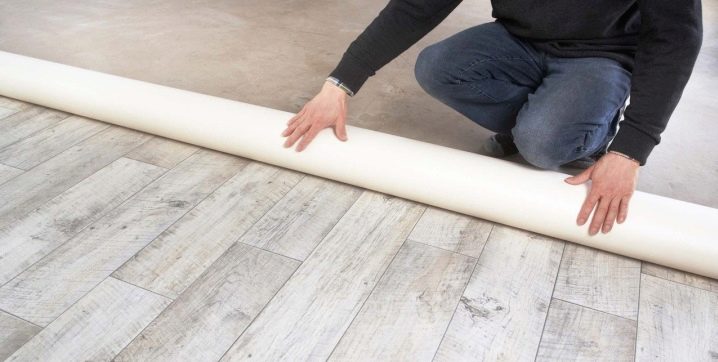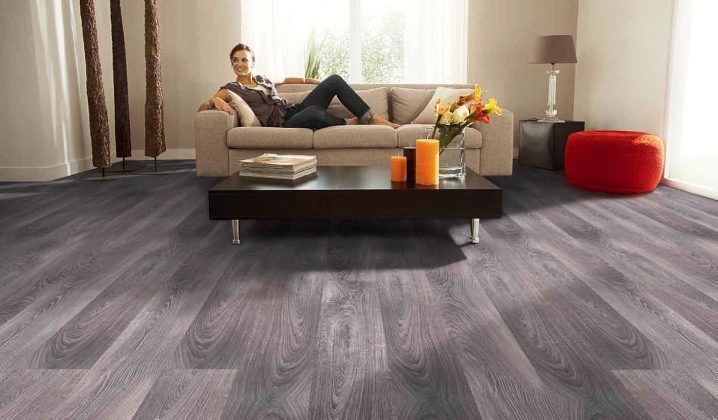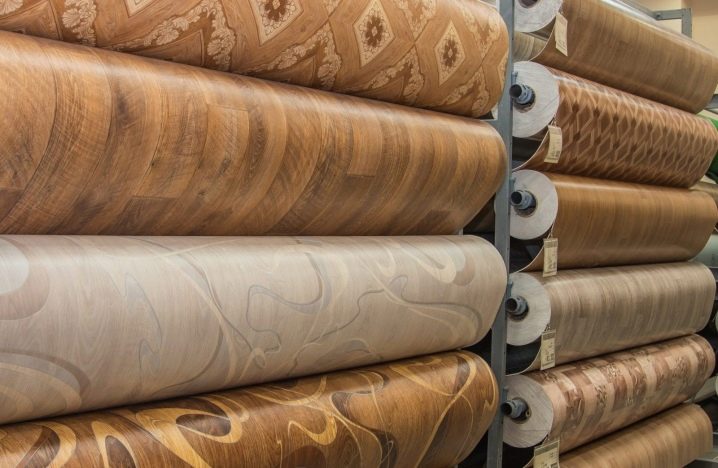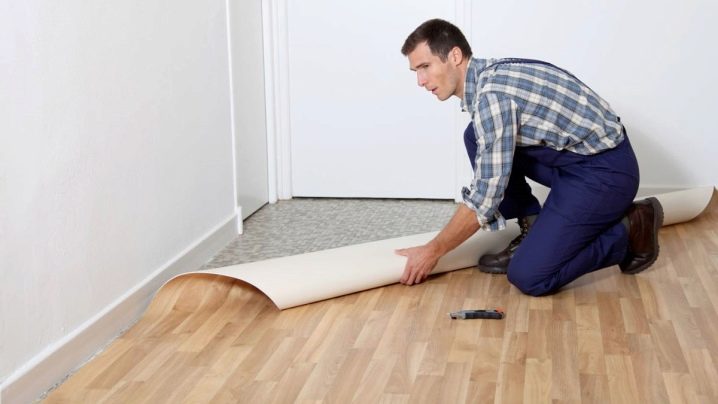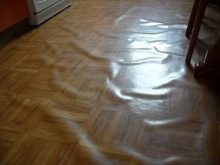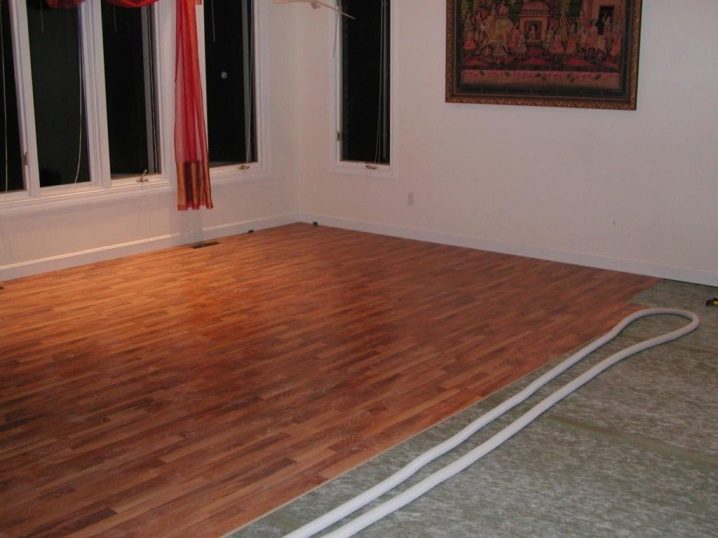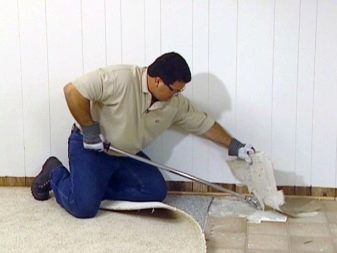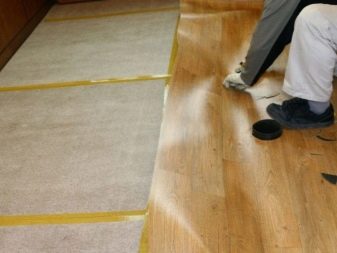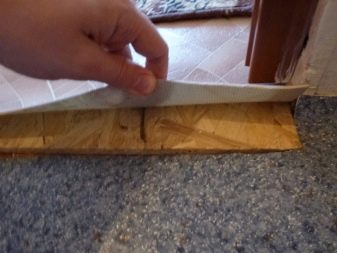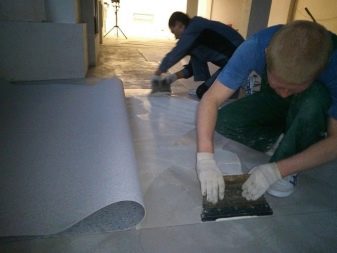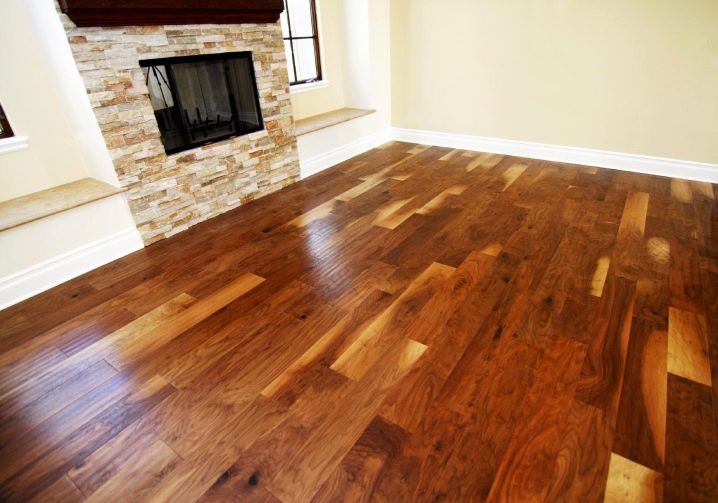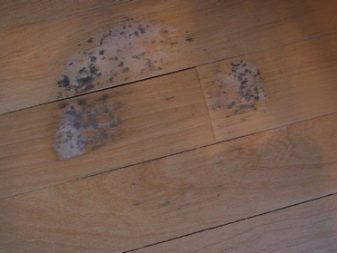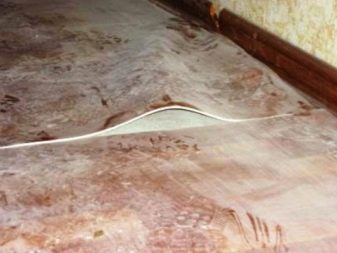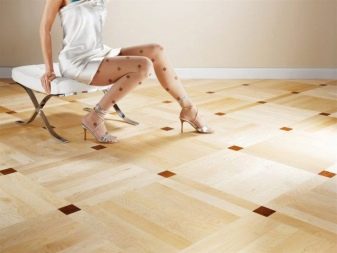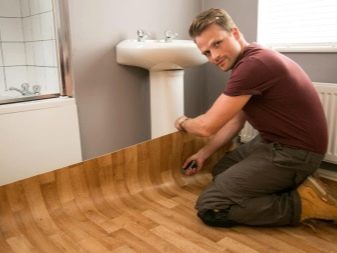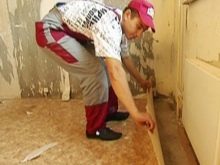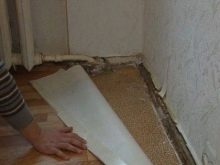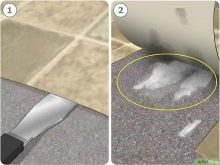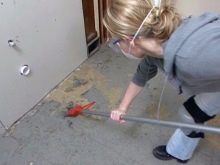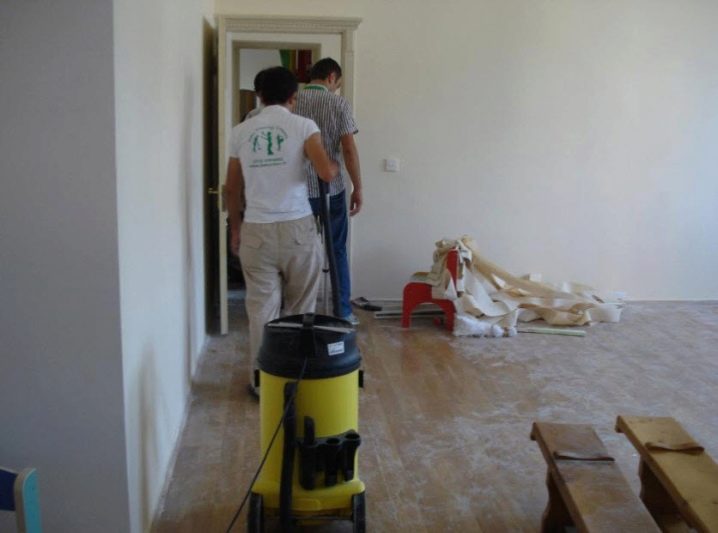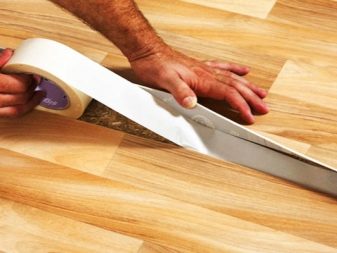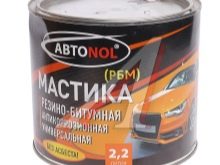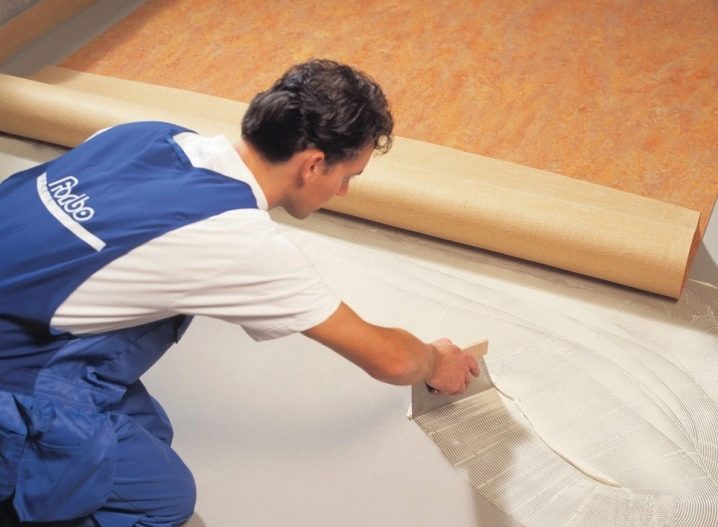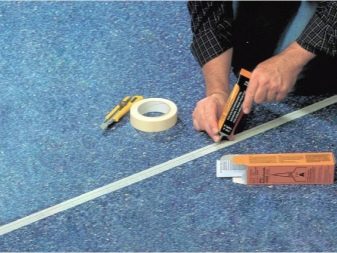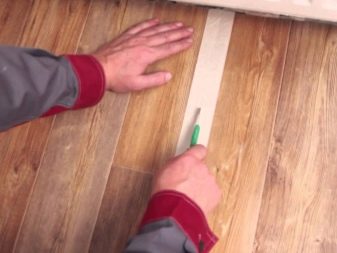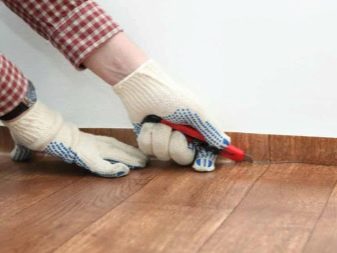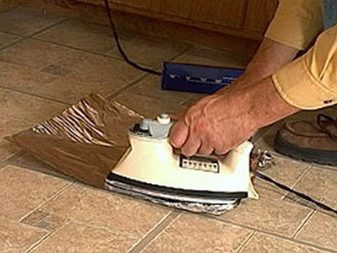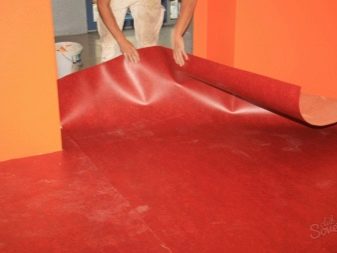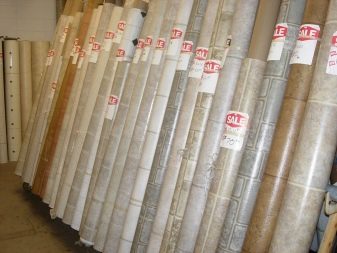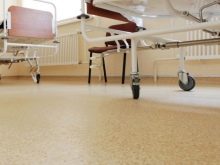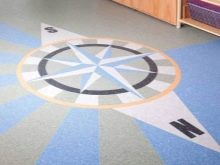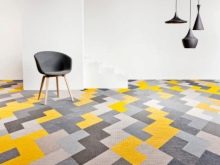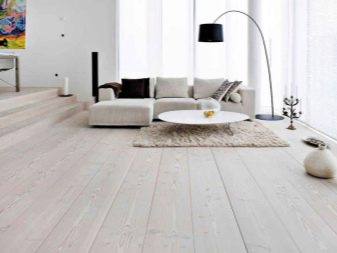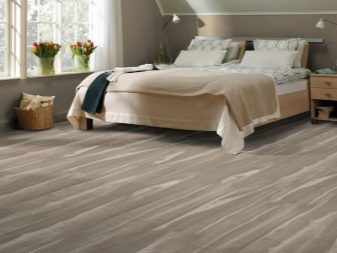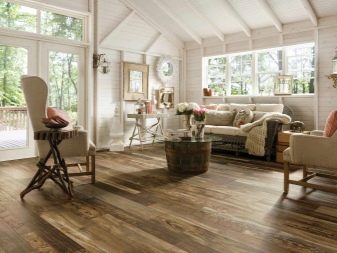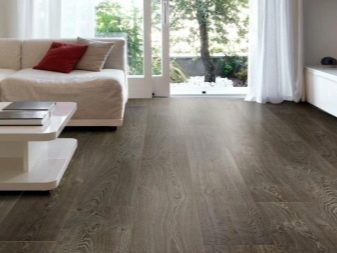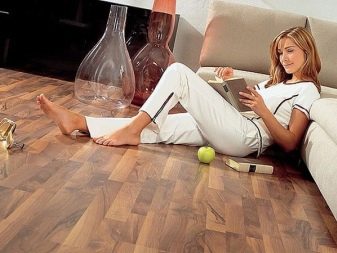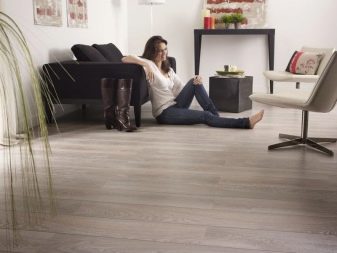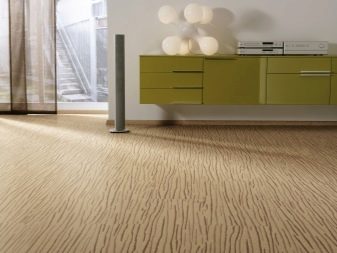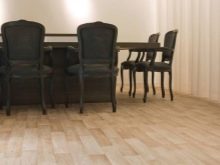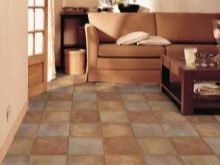Can I lay a new linoleum on the old?
About all the advantages and disadvantages of putting a new linoleum on the old, arguing so far. For this type of flooring there are contraindications, in the presence of which this type of installation will not allow to obtain a high quality result. Also, flooring involves many nuances that must be taken into account.
Advantages and disadvantages
First you need to say a few words directly about the linoleum coating. It is the cheapest form among all existing ones, however, this does not mean at all that it looks cheap and does not serve well.
On the contrary, linoleum does not require special care. It does not need to be polished or cleaned too thoroughly, since dirt practically does not stick to it,In this connection, all care is reduced to an ordinary wiping with a damp cloth and timely sealing of irregularities and damage.
The old coating does not always turn out to be old. So, in some cases, it just may not fit the atmosphere of the room, not be combined with it in color or style. In this case, the most logical would be laying a new linoleum over the old.
This method has many advantages:
- Laying a new coating on top of the old saves a lot of time, which would be spent on dismantling the old coating, preparing the surface and other preparatory procedures.
- Due to the fact that there is no need to dismantle and install an insulating coating, substantial savings in cash are achieved.
- If you put a new layer on the old one without dismantling it, this will help to avoid the formation of debris and dirt during work (not quite, of course, but their number will be much less than with complete replacement of linoleum).
- Since the old canvas will serve as a kind of litter, thus, it will be possible to achieve a high level of noise and heat insulation.
- Due to the double layer of linoleum, the floor will become softer, hiding the sound of footsteps.
Despite all these advantages, the method has several disadvantages:
- The possibility of rapid damage to the fabric with insufficient preparation of the old coating, which serves as the basis. There is a chance that the new floor will go in waves, creases form on it.
- There are also risks for the development of mold and mildew, if the builder “didn’t finish watching it” during installation. The fungus from the substrate can easily spread to a new layer of linoleum, and this is fraught with health problems in the future. Some types of fungus can contribute to the development of asthma and other problems with the respiratory system.
- With the formation of creases and holes, it will be much harder to repair the canvas than if it were laid on a concrete base.
Thus, you need to carefully weigh the pros and cons before making a decision to install a new layer of linoleum on top of the old one and only then begin to plan such an important decision.
When can I put?
Laying a new linoleum on top of the old seems to be an easy way out, however, in reality, the situation is far from simple.
There are indications that it was possible to put linoleum on top of an existing one. Ignoring them will lead to an early deterioration of the new coverage, so that complete overhaul will be a more economical option:
- Existing floor coverings deserve careful attention. Pay attention not so much to its beauty, as to the current state. Cracks in the layer, which do not form a relief or a height difference of no more than 1.5 mm, can be ignored and not considered as a stop signal for this method of mounting a new linoleum.
- Pay attention to how the canvas is fixed. If it is tight to the floor and, so to speak, glued tightly, there are no contraindications. Examine the floor extremely carefully, so you see the existing voids and quickly eliminate them.
- If your linoleum has antiseptic impregnation, then you are very lucky. Most likely, you will not find fungus or other vegetation here.
If you can not boast of the presence of such impregnation, it is best to pay close attention to the presence of anomalies, even remotely resembling a fungus.If you have not found anything, then the canvas is suitable for use as a substrate.
- Floor evenness also plays a significant role. It so happens that the old linoleum was laid directly on a wavy floor, and as a result, it was torn and cracked. If the floor does not have any differences and it can be called even, then laying a new layer on top of the previous one is possible.
- Also important is the service life of the previous layer. If he has been bed relatively recently, there is no reason to refuse to use it as a substrate. On the contrary, a foolish decision would be complete dismantling, since, ultimately, it will be more expensive and more energy-intensive.
- Plays a role and compliance of an old covering on type and new. Linoleum is divided into the following types: household, semi-commercial, commercial and special. They differ in the degree of wear resistance. Ideally, a new linoleum belongs to the same type as an already laid bed (for example, it is good to lay household appliances on household, commercial on commercial and the like).
In general, there are quite a lot of indications for approving laying linoleum over an existing coating.
It is imperative that your option fully meets these requirements,otherwise, the situation may not be in your favor, and the resulting floor will not have the desired effect.
Why can not make styling?
There may be several options:
- First of all, you can not lay a new layer on the old linoleum, if it is not firmly fixed on the base. The indicator can serve as voids, bulges and the so-called waves. If the voids are small, you can try to eliminate them with improvised means by cold welding, however, if the entire linoleum cloth, roughly speaking, is mounted only on baseboards, it is better to make a complete dismantling and make new floors properly.
- Regardless of what type of linoleum is laid, its useful life should not go out. For example, it is often the question of installing one coating on another that arises before owners of floors left from Soviet times. It is clear that it will be very difficult to tear off the permanently glued linoleum coating, however, this must be done if its service life has already passed the fifteen-year milestone.
- Laying such an overlap on an uneven floor is also not a good idea. It will repeat with accuracy not only all the bends, but also every damage and very soon lose its presentable appearance.
- An important contraindication is the presence of mildew or mold.
It is recommended to abandon this type of installation in favor of capital in the event that the type of existing linoleum differs from the bed.
- An untidy, dust-impregnated coating is not suitable for laying a new floor on top of it. The fact is that dust pollution affects human health in the same way as mold and fungus, not to mention the fact that they often have dust mites, which are no less dangerous.
- Contraindications for installation is a linoleum coating assembled from several tiles or stripes. The fact is that over time, the existing joints will still go away, forming dents in the substrate, which, in turn, will damage the upper fabric.
- It is not recommended to lay it on top of the existing linoleum with a felt backing, as there will be problems with its gluing. An ordinary sealant or double-sided tape is not to be put on a similar model, you will definitely need to purchase expensive materials, so it’s cheaper and better to simply re-floor the floors.
- The most obvious contraindication is a ban on such an installation, dictated by the manufacturer of your chosen model.For example, Tarkett linoleums are often not suitable for such an installation, they can only be laid on a concrete or plywood capital floor.
To unequivocally answer the question of how best to lay linoleum - on the old floor or on the freed floor, definitely will not work. Both methods have their advantages, however, it will still be more logical and correct to choose dismantling.
How to remove the old coating?
If you analyzed the existing situation in your house and came to the conclusion that the floor does not meet the necessary requirements or fits most of the “against” parameters, you may have a logical question about removing the old linoleum.
In this case, you will need skill and patience, as well as following the instructions below:
- First you need to completely free the room from any objects standing on the floor. Take out all the furniture, remove the baseboards.
- Vacuum and clean pores. It is easier to dismantle a clean floor, as it is better to soften.
- On the old canvas at a distance of 20-30 cm from each other, it is necessary to make incisions from wall to wall.The bands should run parallel to each other.
- Dilute soap solution at the rate of 100 ml of dishwashing detergent per liter of warm water.
- On the cut stripes begin to wet the linoleum, gradually peeling it off. First, the top layer will come off, then you need to separate the felt substrate. It may require more wetting.
- Separate the linoleum stripes, gradually moving from the far corner to the door. It should be noted that the solution will not only facilitate the process of peeling, but also prevent dust from entering the air.
- After the main part of linoleum is dismantled, proceed to peeling the felt residues. To do this, moisten them well with a solution of dishwashing detergent and let them dry completely. Scrape off the dried felt with a spatula. Vacuum clean and wipe with a damp cloth. Thus, the old canvas will be completely dismantled.
Filmed linoleum is best placed in the garbage bags directly in the room in which it was dismantled. This will prevent the spread of dust and dirt throughout the entire apartment, as well as facilitate the task of collecting debris.
Please note that it is best to work with gloves and a respirator. Especially it concerns the dismantling of a truly old coating, which is more than 15 years old.
Such preventive measures will prepare you for the fact that under any of the canvases will be mold. So, you do not have to touch it with your bare hands, and you do not breathe disputes.
Please note that during the vacuuming operation you will most likely have to change dust bags more than once. The best option is to use disposable, as dust particles can settle in a fabric bag, thereby spoiling it. Paper bags are much better suited.
Also, as the nozzle is best to choose metal, it simultaneously with the collection of dust polishes the floor.
What can be properly glued?
To glue the new linoleum coating over the old, you will need to use special tools that are suitable for these purposes. The fact is that the usual glue does not fit here, because the surface of linoleum is fairly smooth, and the adhesion will be minimal. You should choose special absorbent formulations that allow you to work with non-absorbent surfaces.
They are quite expensive, so we advise you to first consider what will come out cheaper: the purchase of such glue or the complete rewrite of the floor construction.
You can glue a new layer of linoleum on the old and with the help of double-sided tape, however, this method is the exception rather than the rule. Please note that you can not stick the entire fabric on the tape. They can be fixed only with detached corners, small voids, etc. If possible, try to smear the substrate well with glue to avoid the formation of such gaps. Thus, the adhesive tape is used only in extreme situations.
As an alternative to a special solution that works with non-absorbent surfaces, it can be recommended to use a rubber solution or a mastic on a rubber or synthetic basis. Although it has slightly worse characteristics, it is also possible to provide a decent grip between the two linoleum layers, thereby making the installation of one canvas over the other more accessible. You can buy mastic in any large store building materials, unlike special adhesives, which can not be found even in every major city.
Please note that any of the adhesives requires a long time to dry.
The difference is that glue for non-absorbent surfaces "seizes" faster than mastic. For optimal gluing of linoleum using mastic, you need to place the canvas under the press for 24-48 hours until it is completely dry, so that later no waves form where the canvas could move away from the base.
For gluing joints using methods of hot and cold welding. If the first option is carried out mainly by professionals, as it requires the presence of special equipment and skills, the second option is quite possible at home. Welding is sold in hardware stores in tubes. For home, optimal welding compounds of types A and C.
The nuances of the flooring
When installing a new linoleum cloth over the old one, several important nuances should be taken into account:
- By and large, this method of laying differs little from ordinary linoleum flooring, so it is necessary to carefully prepare the original surface: clean, fix, treat with an antiseptic against fungi and parasites.If you do not do this, further ignoring is fraught with the appearance of unpleasant consequences, such as the formation of creases on a new canvas, as well as an unpleasant smell.
- When laying linoleum on a large area without docking is necessary. It is done in several ways: overlap or butt joint. Laying the overlap allows you to make the joint as flat as possible, while the butt joint is a more economical option, since it does not require additional trimming of the canvases.
- Speaking of trimming, you should pay attention to the next moment, the seams should be perfectly flat and fit as closely as possible to each other. How good welding would not be used, even she could not even completely equalize curved seams.
- Type A welding is suitable for small gaps in welds that are less than 1 mm, while type C welding is more suitable for large welds (up to 4 mm).
- For mounting over the existing linoleum, the whole canvas is more suitable; however, this question is not a matter of principle. It is much more important that the source itself consists of a single solid layer and does not have seams and joints over the entire area of installation.
- For flooring over existing linoleum is better to choose the most rigid samples.This is due to the fact that the final result is very soft, easily subject to pushing. Hard linoleum is more durable, it does not appear longer dents from cabinet furniture or other heavy items of furniture.
- About the existing small waves you should not immediately abandon the installation of the canvas in this way. Sometimes, to eliminate such irregularities, it is enough to iron the linoleum through a soft cloth at the minimum degree of heating of the iron, and the waves disappear as if by magic.
Carefully read the label purchased linoleum. As mentioned above, some samples are simply not suitable for installation over the old floor covering, and it will definitely have to be completely cleaned up to a cap base.
Examples and options
Below is a photo gallery of images with interiors of rooms in which linoleum was laid without dismantling the old cloth.
In public institutions often use this method of laying, when a new linoleum just impose on the old. This mainly concerns schools, hospitals and other public institutions.This is done in order to save, but, unfortunately, the result is not always happy with a long, presentable appearance.
The bright colors of the linoleum floor can hide the possible flaws made during the repair. The more saturated the design is, the less striking are any flaws.
A good solution will be the choice of light linoleum with a pronounced texture. In such cases, the formation of cracks or holes is least noticeable.
Pay attention that the canvas under it is not very different in color, otherwise all damage to the canvas will be very clearly visible.
For the bedroom, it is preferable to lay the coating on the old layer, since this method provides good sound and heat insulation, makes the floor softer, and the steps on it sound quieter. Thus, a spouse who wakes up earlier will not disturb his sleeping half when he walks from bed to door.
For rooms that open onto a terrace, thermal insulation values are also extremely important. This also applies to rooms adjacent to the balconies, and the balconies and loggias themselves. On balconies and loggias, they often resort to laying one covering on another in order to save.
Double linoleum coating is much softer than a single one, which is very noticeable. If homogeneous (multilayer) layers of linoleum are chosen, then the floor is even softer and allows you to even sit on it without the risk of freezing.
The complex texture distracts attention from the unevenness of the floor, however, it requires the appropriate atmosphere of the whole room. In addition, the stripes-patterned ornament requires precise pattern matching, which is extremely energy-intensive.
Linoleum often has to be replaced due to the fact that it “sank” under heavy furniture. In these cases, the best way out will be to strengthen the place where the furniture is placed, to lay a new layer and install the furniture in place.
On whether you can put a new linoleum on top of the old, see the following video.
